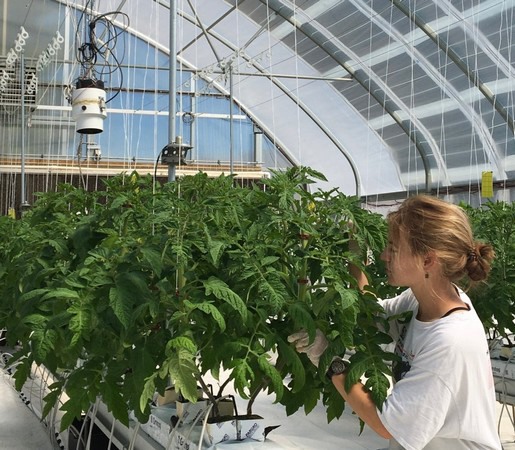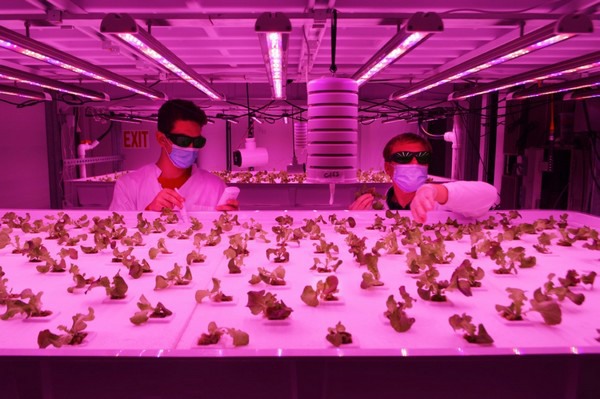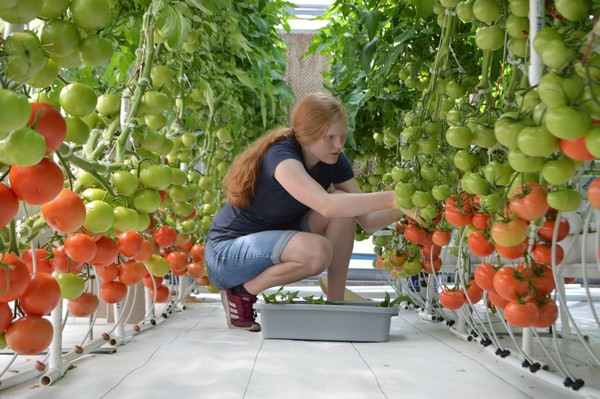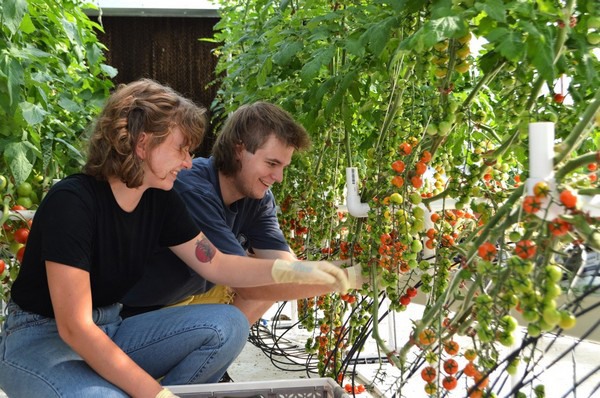“We contribute to educating the competent workforce to enter the controlled environment agriculture (CEA) industry, which is especially important now, with the immense demand for a skilled workforce,” said Murat Kacira, director of the Controlled Environment Agriculture Center and a professor in the Biosystems Engineering Department at the University of Arizona.
“There is and definitely will be a bigger influx of students now, with the international focus on food production in controlled environments, and that really reaffirms the importance of these programs: we need to maintain and grow these programs so we can welcome more students and offer them more courses to ensure they have the knowledge the horticultural industry is asking for.” We could not agree more, which is why we talked to Murat about the programs the University of Arizona is offering and the research they are conducting.

Practice makes perfect
The University offers a variety of courses on engineering and the agronomic aspects of CEA – which is already unique in and of itself, as no other University in North America offers this level of combination of educational courses offered in one program.
As Murat explains, “that is what our students need, and what the CEA industry these students will enter asks for, graduates who understand the biology and engineering and technology to provide the environment that plants need. Most of our students are attracted to the CEA industry; we have students working in greenhouse operations or vertical farms where they become lead growers or join an R&D department, or they go towards academia, where they become educators and researchers. They have plenty of career options to choose from, and they are often sought after by companies in the CEA industry, who, I might add, are very satisfied with their skill sets and capabilities and the way they have been educated. Our graduates really do us proud.”

The students do not just get their knowledge from books – after all, growing can only be learned in a hands-on way. In order to offer their students that opportunity, the University has total of 29,000 square meters of greenhouses, with 3 large facilities and 16 smaller research greenhouses. Murat explains that, in the teaching greenhouse, each student has their own plant production section to practice where there responsible for plant care, crop registrations and other data collection, analysis and interpretation to grow their crop optimally. “That way, they can really get to see and feel what they are learning in class. They learn how to balance resource allocation for different plant parts, harvest and prune, as well as about other plant care related subjects. We also offer intensive workshops, where everything the students learn in a semester, or maybe even two or three, is condensed in a few days for those who are interested in learning about hydroponic crop production.”
Research makes perfecter
Besides the important task of educating the workforce of the future, the University plays an important role in the sector in another way: research. Currently, they are working on various projects, such as specialized greenhouse covering materials that are wavelength-selective.

“Our interest is to co-produce food and energy within the same footprint, leading towards a greenhouse system that is self-sufficient in terms of energy demands. Another research deals with quantum dots. Basically, that is another wavelength-selective material shifting some of the wavelengths to other wavelengths, for example, UV to orange-red, in order to enhance photosynthesis and to improve the quality and the yield of the crop.”
Murat tells us that the University, in collaboration with other Universities, is also looking into co-optimization of environmental variables in indoor vertical farming systems. “One of the main challenges in vertical farming is the energy needed for lighting, cooling, and humidification. We have projects dealing with developing advanced monitoring and environmental control applications, so we can come up with recipes and thresholds, thus co-optimizing these setpoints leading towards significant savings in regards to energy and resources, enhancing resource use efficiency.”
More research, more perfect
Of course, in such an ever-developing industry, more research is always needed. Murat and the other researchers at the University agree wholeheartedly, and they see many areas where more research and collaboration could hugely benefit the CEA sector. He explains that, when it comes to the mature greenhouse industry, the current interests are towards integration of more automation and robotics: “AI is a huge topic right now; how can we create a more autonomous greenhouse? Of course, the discussion surrounding automation is one heavily fueled by labor problems, which have become increasingly pressing recently.”

“When it comes to vertical farming, the focus is very clearly on how we can improve the engineering and environmental controls of the systems,” Murat explains. “How can we develop strategies and techniques to optimize lighting, cooling, dehumidification, air flow? our research programs focus on biofeedback based environmental controls, optimizing air distribution, and developing resource conserving environmental control strategies.. We also focus on new crop varieties which are suited for indoor cultivation, and automation and robotics are important in the vertical farming sector, too.”
Lastly, Murat emphasized that, although engineering can do a lot, it cannot do all. That is why a lot of research is also focused on new crop varieties that are better suited for CEA production and their biological characteristics. “Right now, there is a lot of interest in microbiome and how we can use beneficial bacteria in hydroponic systems to optimize the uptake of nutrients and fertilizers so that resources can be saved and production can be improved. In terms of looking at the plants itself for CEA production, resistance to pests and diseases, too, is a hot topic.”
As you might have gathered whilst reading this article, research is vital for the development of the CEA industry, as are enthusiastic students who will enter the next generation workforce. That is what the University of Arizona Controlled Environment Agriculture Center aims to provide, as they believe “we need bright-minded students who are excited for the future of CEA, and who can bring their creative ideas and views to the (research) table or the farm to help shaping the future of agriculture”
For more information:
University of Arizona
arizona.ceac@gmail.com
www.ceac.arizona.edu
